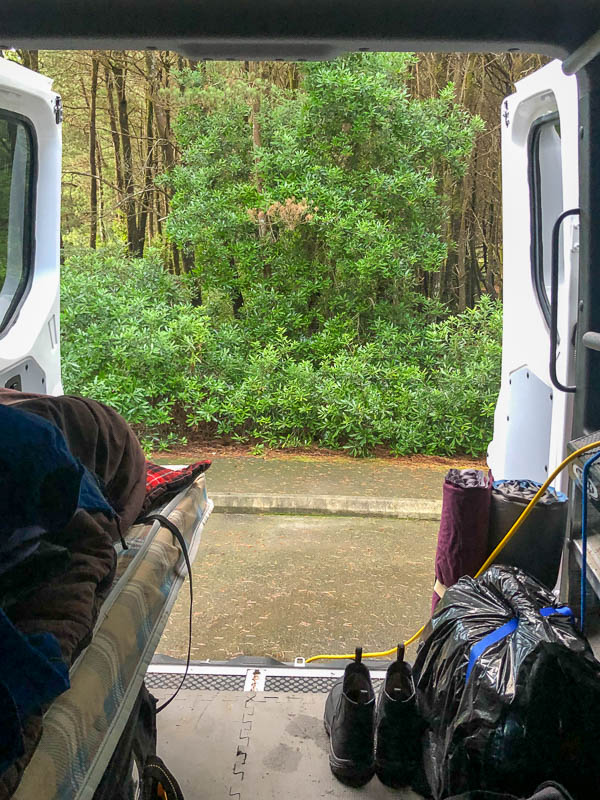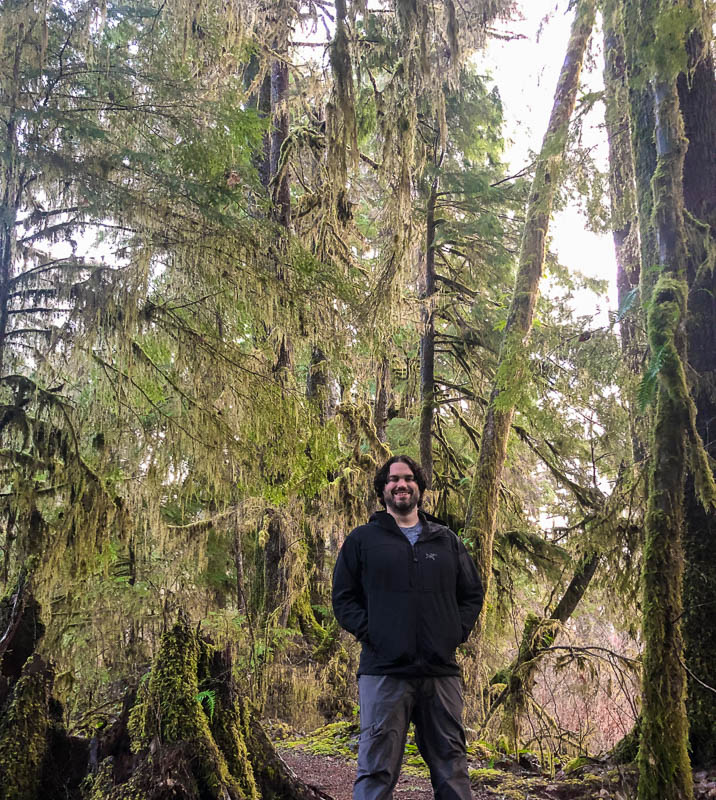
Rover Location Database
Travel
- Travel
- Apr '25 DN07
- Nov '24 DN19-29
- April '23 CN76
- Sept '22 CN76
- May '22 CN93
- Feb '22 CN93
- Jan VHF '22
- Dec '21 CN78
- Aug '21 CN76
- July '21 CN78
- May '21 Ely, NV
- July '20 CN98
- June '20 DN08
- June '20 N7G
- July '19 DN27-07
- Sept '18 CN98
- June '18 DN08
- June '18 DN22-43
- June '18 EN02
- June '18 Article
- June '18 EM87
- Summer '17
- Sept '16 CN87
- Apr '14 CN82-92
- Mar '14 Plan
- Jan VHF '14
- Jan '13
- Oct '12
- May '12
- Jan VHF '12
- Sept '11
- June '11
- May '11
- April '11 CN97
- March '11 CN97
Olympic Peninsula in the Winter
Dec 10-13, 2021
The Plan
On Friday-Sunday, Dec 10-12, 2021, I explored the Olympic Peninsula with Alex, my son-in-law. The goal was to introduce this Midwest/East Coast man to the Pacific Ocean and Olympic Mountains. We hoped to activate a rare grid at my favorite spot at altitude at North Point.
It’s a good chance to test my new 4x4 Sprinter camper van in adverse weather. The forecast was for 100% chance of rain every day everywhere in the rain forest in winter. After all, this is around Forks, WA, that has average annual rainfall of 110 inches.
This report is more of a travelogue than radio expedition.
The Route
The Olympic Peninsula is a wonderfully remote and undeveloped wilderness area that’s separated from nearby Seattle by Puget Sound, a natural tourist barrier. We circumnavigated the peninsula on Hwy 101 in the counterclockwise direction. Last summer, my two scouting trips had Alex’s visit in mind, so I had a pretty good idea of my route and desired stops.
The big loop can be done in a single, very long day of driving. We took three days and side trips. Total distance 490 miles.

- Home
- Lake Crescent
- North Point Lookout
- Bogachiel State Park (first night camping)
- La Push, Second Beach
- Grayland Beach State Park (second night camping)
- Hilltop in CN86 in forest
- Home
The Rover Van
I have made lots of organizational changes since my last trip, mostly to move things off the floor and within easy reach. I added a student desk, wire shelves, privacy curtains and window blinds. The mast is now strapped to the side wall along the bed. No more tripping over the telescoping aluminum.
The fridge moved onto the wire racks within easy reach. The 12v lithium battery went on the bottom shelf, and the IC-7300 went on an upper shelf. Ah, at last, all dry food was stored in bottom drawer and very simple to access (perhaps the best improvement of anything I’ve done).

Alex is an expert mechanical engineer and automotive mechanic. Before departure, we bought a good rivnut tool (Astro 1442, a 13" hand-operated Rivet Nut Setter) and practiced using it. We added new anchors to strap my 6m5 antenna to the wall. Worked great. Now I want to add more upper hangars and L-track.

The bed platform is unchanged. My layout is designed to keep the main aisle open all the way from front to back and it's easy to move around and to use all the doors. We could enter from the back, take off our wet shoes and contain all the moisture in one area. Some drivers have special driving gloves; I have special warm fluffy driving slippers.

Results
Alex and I got up close and personal to heavy continuous rain, massive waves breaking on huge rocks, vampire fanbase culture, deep rain forest, and endless shades of green and moss. Some amazing highlights:
Ferry ride across Puget Sound

Drive along Lake Crescent

Tested the Sprinter van in snow (fail)

Tested Alex's snow-shoveling skills (pass!)
In a "self recovery" effort we turned around the 19-foot van in a 20-foot wide road.
Moss-covered rain forests

Amazing rainfall at Bogachiel State Park
We huddled inside the van while fat wet drops played a very noisy drummer tune all night long on the plastic air-vent dome. No photo. We stayed warm and dry with a heater plugged in to shore power.Fanbase culture around Forks, home of Twilight TV series.

Hike to Second Beach at La Push

Crashing surf at La Push

Weathered shore trees and forests

Rainbow near Quinalt

Bald Eagles and shore birds at Grayland Beach

Expansive shore at Grayland Beach

Quality time

Big old-growth cedar forest

490 miles driven
Priceless.Problems
We forgot to bring a few things: my waterproof boots, and Alex’s sleeping bag. Both are a little important for winter camping and hiking. So, we stopped at the incredibly good “Forks Outfitters Thriftway and Ace Hardware” store and I bought new boots. This store is highly recommended. Alex slept in my comfy reclining office chair, and our electric room heater provided balmy nights inside from shore power.
The Sprinter van's "four wheel drive" was disappointing in snow. Alex and I ventured twice into deep snow this week, once to Mt Rainier and once into the Olympics. We had to turn back both times. When a rear wheel loses traction, the van's 35/65 torque distribution was unable to transfer enough power to front wheels to pull us through. Although the van has excellent BG KO2 tires, its drive train has open (not locking) differentials. Further, the traction control system detects slippage and reduces power. The proximity control system also reduces power when you're nose-in to a snowbank, preventing torque when you need to move in a tight situation.
Thankfully, Alex is an experienced off-road Jeep guy and snow shoveler. His calm, level-headed spotting got us safely through sheets of ice disguised as fluffy new snow.
On the plus side, we managed to turn around a 19' vehicle on a 20-foot wide icy road, with solid rock in front and a sheer cliff behind us. I call that a win.
In fairness, the conditions really were extremely slippery and steep. This is not the right vehicle for that. The sprinter system will get me through a lot of dicey spots that would stop a 2wd vehicle. Although I've been up to the same lookout tower last summer, this was full-on winter off-road driving. I need to study the manuals and look for more traction-control features.
My cellphone data plan got eaten up again. I haven't yet figured out where all the data goes. I didn't run Slack, chat rooms, propagation maps, driving navigation programs, facebook or reddit, or much of anything. (As a result of this trip, I have enrolled in an Unlimited Data plan.)
Overall: Extremely enjoyable and memorable trip. Good times.
Barry K7BWH
| < Previous | Page 9 of 36 | Next > |
©1998-2025 Barry Hansen